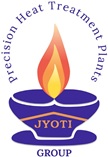Nitriding is a surface hardening heat treatment process used to improve the hardness, wear resistance, and fatigue strength of metal components, particularly steel and its alloys. Unlike other heat treatments, nitriding introduces nitrogen into the surface layer of the material at relatively low temperatures, typically between 500°C and 590°C (930°F and 1094°F). Here’s a detailed overview of the nitriding process:
Key Features of Nitriding
- Purpose:
- Enhance surface hardness.
- Improve wear resistance.
- Increase fatigue life.
- Enhance corrosion resistance.
- Maintain dimensional stability (minimal distortion due to low processing temperatures).
- Suitable Materials:
- Steels containing alloying elements like chromium, aluminum, molybdenum, and vanadium (nitriding steels).
- Tool steels, stainless steels, and cast irons.
- Titanium and aluminum alloys.
- Types of Nitriding Processes:
- Gas Nitriding: Uses ammonia gas (NH₃) as a nitrogen source. The decomposition of ammonia releases nitrogen, which diffuses into the surface.
- Plasma (Ion) Nitriding: Involves applying a plasma (ionized gas) in a vacuum chamber to introduce nitrogen. This is highly controlled and provides uniform results.
- Salt Bath Nitriding: The component is immersed in a molten salt bath containing cyanide or cyanate salts as nitrogen carriers.
- Laser Nitriding: Uses a laser to heat the surface, allowing nitrogen to diffuse into the material.
Process Steps
- Preparation:
- Thorough cleaning of the component to remove contaminants (oils, dirt, etc.).
- Pre-hardening and tempering if required (to achieve the desired core properties).
- Heating:
- The part is heated to the nitriding temperature (500°C–590°C) in a controlled environment.
- Nitrogen Diffusion:
- Nitrogen atoms diffuse into the material’s surface to form hard nitrides (e.g., aluminum nitride, chromium nitride).
- The duration of the process can range from a few hours to several days, depending on the desired case depth.
- Cooling:
- Components are allowed to cool in a controlled manner, often in the furnace, to prevent distortion.
Key Advantages
- Produces a hard, wear-resistant surface without quenching, minimizing the risk of distortion.
- Can achieve high surface hardness (up to 1100 HV or higher).
- Improves corrosion resistance, especially in alloy steels.
- Provides better fatigue resistance due to the compressive residual stresses introduced on the surface.
Applications
- Gears, crankshafts, camshafts, and other engine components.
- Tools and dies.
- Aerospace components.
- Industrial machinery parts.
Let Us know if you’d like more details on any specific nitriding process or its comparison with other heat treatment techniques!


